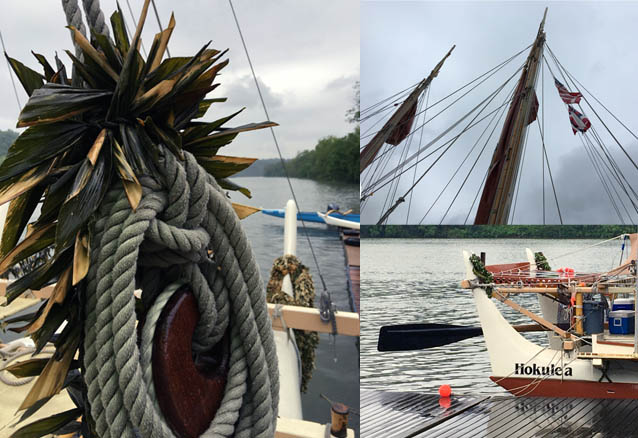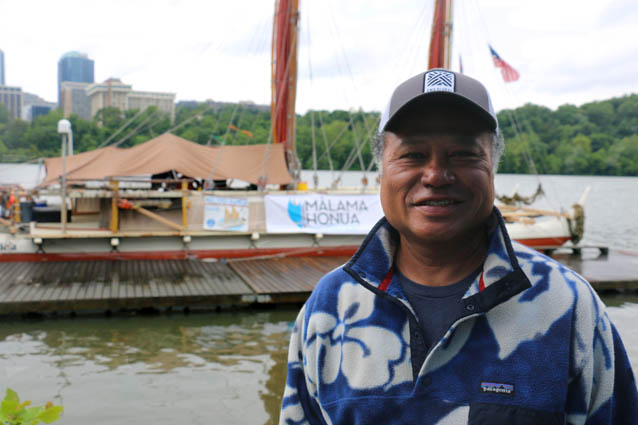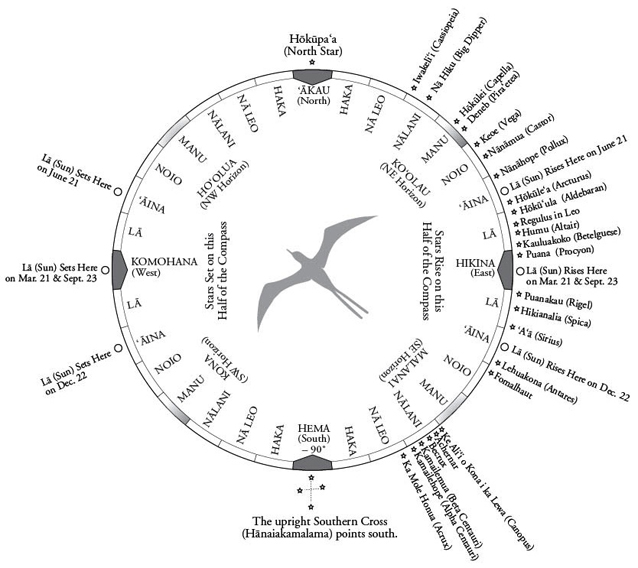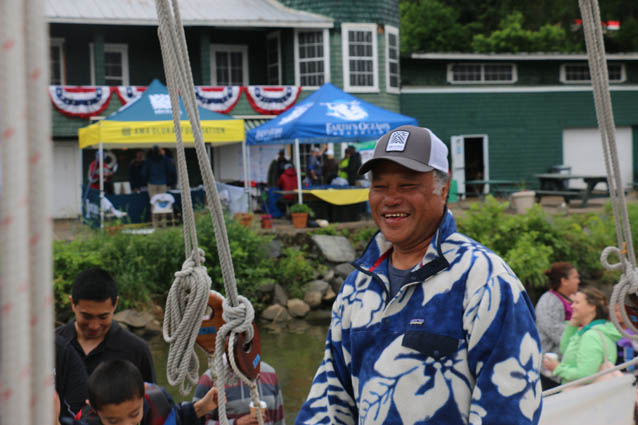Media Included
- Malama Honua - The above video, Malama Honua: Caring for your place, caring for your planet, features interviews with crew members of the Polynesian Voyaging Society, an NPS environmental mission partner, discussing traditional wayfinding, oceanic conservation, and cultural heritage as part of BioBlitz2016; Washington Canoe Club in D.C.
Caring for your place, caring for the planet
With nautical flags flapping in the breeze, in May 2016 a double-hulled canoe called Hōkūleʻa, a replica of an ancient Polynesian vessel, sailed up the Potomac River to dock at the Washington Canoe Club at the Chesapeake and Ohio Canal National Historical Park in Washington, DC. Without modern instruments and guided only by the sun, sea and stars, Captain Kalepa Baybayan of the Polynesian Voyaging Society (PVS) charted the canoe from Hawaii up the Atlantic coast to DC to participate in BioBlitz 2016, a National Park Service Centennial celebration. The canoe looked out of place, yet regal, against the modern skyline of Rosslyn, Virginia, on the opposite shore. Traditional Hawaiian Maile lei festively decorated the hull’s rigging.

The crew’s arrival at the historic boathouse was one of many stops as part of Mālama Honua—"Caring for your place, caring for the planet"—a worldwide voyage to raise awareness about oceanic conservation issues and indigenous knowledge, including the lost art of traditional wayfinding. In an era when Global Positioning Systems have become integral to nearly every aspect of our lives, it seems unlikely that the art of celestial navigation should surface from the depths of the past to steer a modern voyage. The Polynesians are known for their oceanic enterprise and navigation, and the PVS captain and crew are carrying this ancestral tradition forward.
On a rainy and unseasonably chilly morning along the banks of the Potomac River, and with coffee mug in hand, Captain Baybayan discussed seafaring traditions, oceanic biodiversity, stewarding partnerships, and his passion for the sea in an interview with Julie West, communications specialist with the NPS Natural Sounds and Night Skies Division.
Guided by stars

Hōkūleʻa is the Hawaiian name for Arcturus, a zenith star that passes directly over the Hawaiian Islands. The name means “Star of Gladness.” Baybayan said it is a very old and traditional name that likely derives its meaning from the feeling of gladness ancient navigators must have experienced upon seeing the star and being guided by it into the islands to reunite with family.
On the ocean, Baybayan and crew rely on the rising and setting of stars and the location of planets. Arcturus is one of hundreds of stars that experienced captains like Baybayan uses to navigate. Other key stars include Sirius, Scorpio (known as “the great fish hook of Maui”), the Big Dipper, the Southern Cross, the North Star, and most importantly, the sun, which predictably rises in the east and sets on the opposite horizon in the west. Instead of using a Western compass—a circular instrument with 32 points and a dial pointing to magnetic north— the PVS crew members use a star compass—a conceptual framework that calculates latitude based on the height of the arc, or altitude, of stars. Baybayan explained that the canoe, itself, serves as a second compass. Its edges are calibrated to include 32 points that correspond to the external compass of the horizon and rising and setting celestial bodies. In this way the canoe is the dial that spins within the larger compass circle, with the captain navigating from the middle. Baybayan said this method takes mental math and an understanding of spatial geometry.
One with nature

According to Baybayan, the PVS system of navigation is a hybrid of traditional knowledge and Western science as refined by Nainoa Thompson, the society’s President and master navigator. Thompson’s navigation techniques combine meteorology, oceanography, astronomy and related sciences with the art of observation learned from sailing the seas. In addition to orienting by the sun and stars, awareness of one’s surroundings is essential for a safe and successful passage. Observing the colors of the ocean, shifting winds and weather, the size of waves, movements of the canoe, and other subtle changes immerses one in nature and sharpens the senses.
“Our traditional knowledge is highly connected to spirituality, whereas western science is not. That’s the primary difference that I see between the two different paradigms. But they’re not disconnected,” Baybayan said. “You can step between the two worlds of being a traditionalist and yet a modern day scientist. Both are connected.”
For Baybayan, sailing for long stretches of time without access to cell phones, laptops and other amenities has deepened his appreciation for natural life and biodiversity. He described moments of heightened connection with nature—of whales illuminated in moonlight, their songs lulling crew to sleep; passing dolphins playfully tapping their fins against the boat, a trail of fluorescing plankton in their wake; distant bird calls guiding them to land on a cloudy night; and a brilliant Milky Way, luminous against a tapestry of stars.
Making Waves Around the World

Julie K. West / NPS
The PVS voyage is also about connecting with people. From D.C. to Bali to Tahiti, as the Hōkūleʻa journeys around the globe, crew members share knowledge about the sea, traditional knowledge and sustainable conservation with individuals and groups who are making a positive difference through stewarding strategies, such as the National Park Service—a PVS environmental mission partner, National Geographic, and indigenous groups striving to preserve the old traditions with the new.
Baybayan likened caring for the planet with caring for one’s home, whether that home is a canoe, island or capital city.
“Living on a canoe, you’re living on an enclosed ecosystem. You need to rely on the stewardship of your provisions so you can last the voyage,” Baybayan said. “Once you’re on land, the same concept of caring for your crew gets transplanted to your family and home on land. An island is nothing more than a canoe surrounded by ocean. And if you extend that thinking, our planet really is nothing more than an island floating in a sea of space. Earth needs our care in order to survive.”
Morning rains had lifted. Kayakers and other paddle sports enthusiasts making their way downstream slowed to admire the strange new boat anchored at shore. A crowd of BioBlitz participants had gathered on deck of the Hōkūleʻa, and crew members were “showing the ropes.” With a spring in his step, Baybayan walked up the boat plank to join the fun. He was in his element—smiling, shaking hands and greeting people, “Aloha! Welcome to the Hōkūleʻa.”
Article and video by Julie West, communications specialist with the Natural Sounds and Night Skies Division
Tags
- chesapeake & ohio canal national historical park
- climate change
- natural sounds and night skies division
- polynesian voyaging society
- bioblitz
- bioblitz 2016
- bioblitz2016
- washington canoe club
- d.c.
- washington d.c.
- night skies
- natural sounds
- cultural heritage
- traditions
- celestial navigation
- oceans
- oceanic conservation
- sustainability
- biodiversity
- environmental mission partner
- ocean stewardship
- hawaii
- hawaiian culture
- traditional sailmaking
- cultural history
- tradition
- traditional wayfinding
- wayfinding
- national park service
- nps
- nps 100
- nps cenennial
- nsnsd
- citizen science
- cultural
- historical
- partnerships
- native hawaiian
- chesapeake and ohio canal national historical park
- c&o canal
Last updated: April 29, 2023
